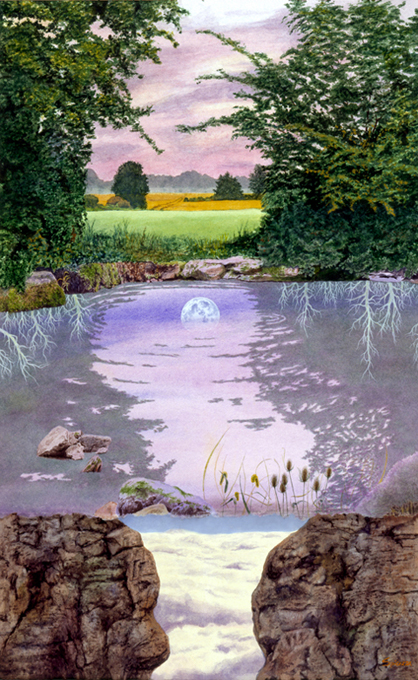

In Lake of My Home, the doorway of Inner Truth appears to have led to a downward path. We are presented with a great depth. Mystics in all ages have recognized that transformation takes place through the downward path, the descent. The moon can represent a woman's consciousness and it also stands for transformation through the things which are lowest, meaning an understanding of the need behind an instinct. One goal of individuation (Jung's term for becoming aware of all the parts of yourself) is the inclusion of the instinctual aspects of the psyche in a way that enhances life and does not overwhelm the person.
The painting seems to be divided into three levels. I took this as a portrayal of the construction of the psyche. The upper level would be consciousness (represented by the farm I grew up on), the middle level would be the personal unconscious and the lower level would be the collective unconscious. The personal unconscious consists of all those things that were at one time conscious or were subliminally perceived. According to Jung, one starts the transformation, the journey to wholeness here, by exploring this area which contains the things you would rather not know about yourself. He calls this the confrontation with the shadow. The name of the painting is a reference to Nietzsche who uses the idea of the lake of one's home and which Jung equates with the personal unconscious, one's own personal body of water.
The goal of this downward journey, paradoxically, is "home" (the upper part of the painting), which means returning to yourself with a wider consciousness that includes who you are meant to be and all the unconscious parts of yourself that should have a place in consciousness. This vision of "home" hovers over the scene like a vision. Jung says it is as though the person you were meant to be is preexistent or already present at your birth and it is your task to find her. In this way you find the way home.





